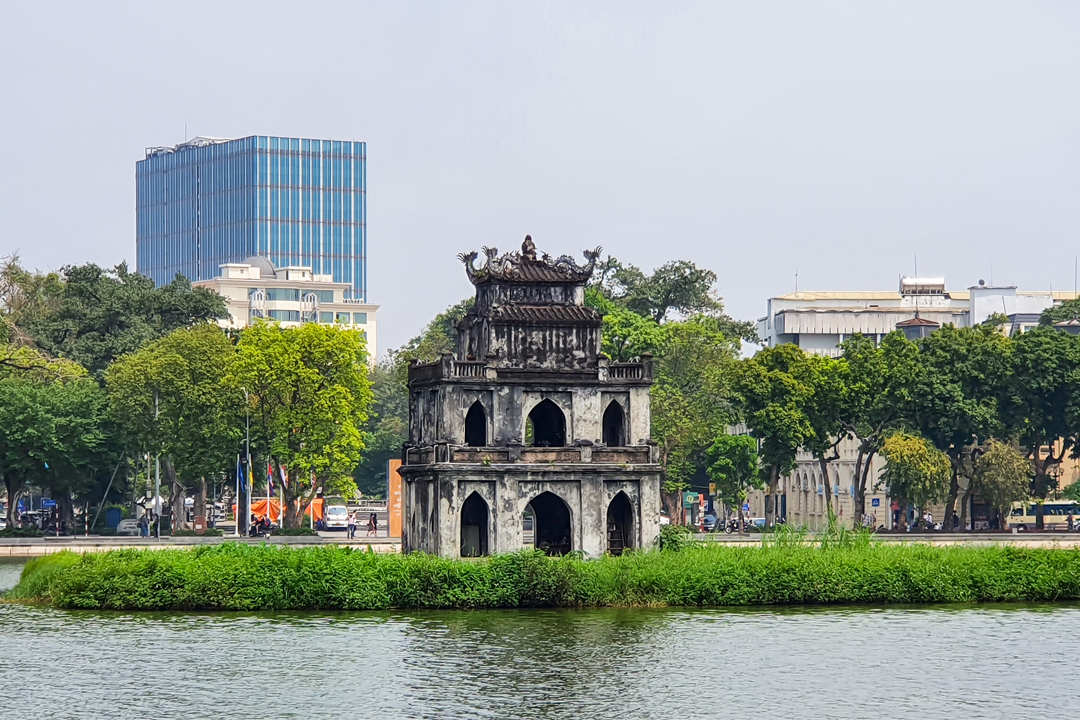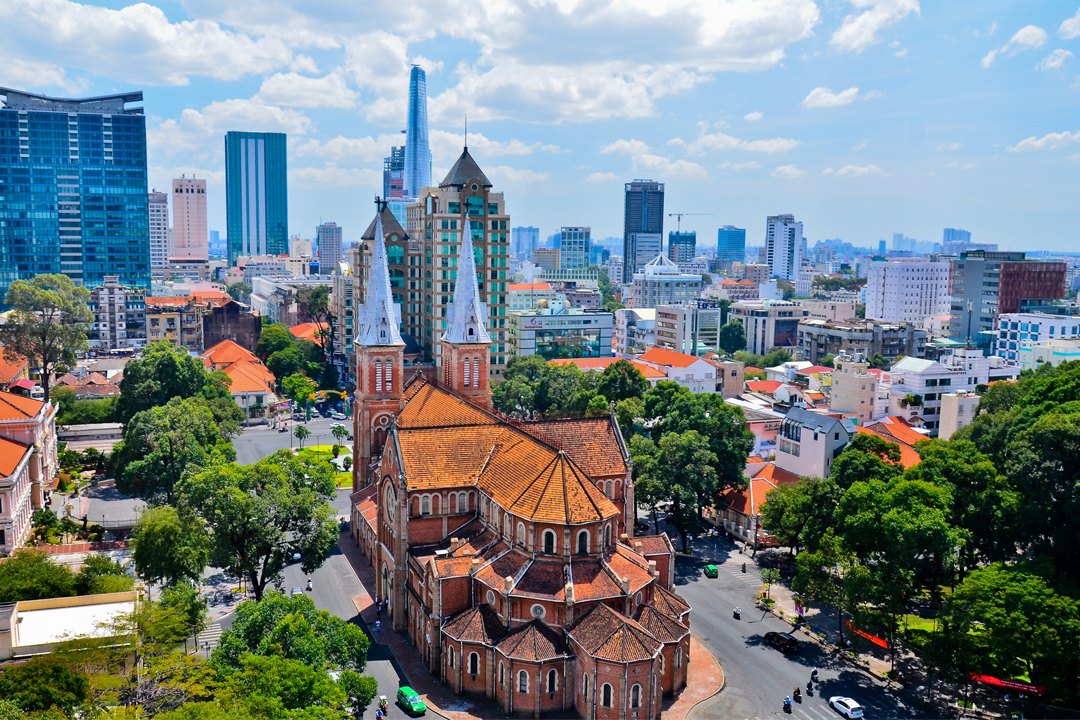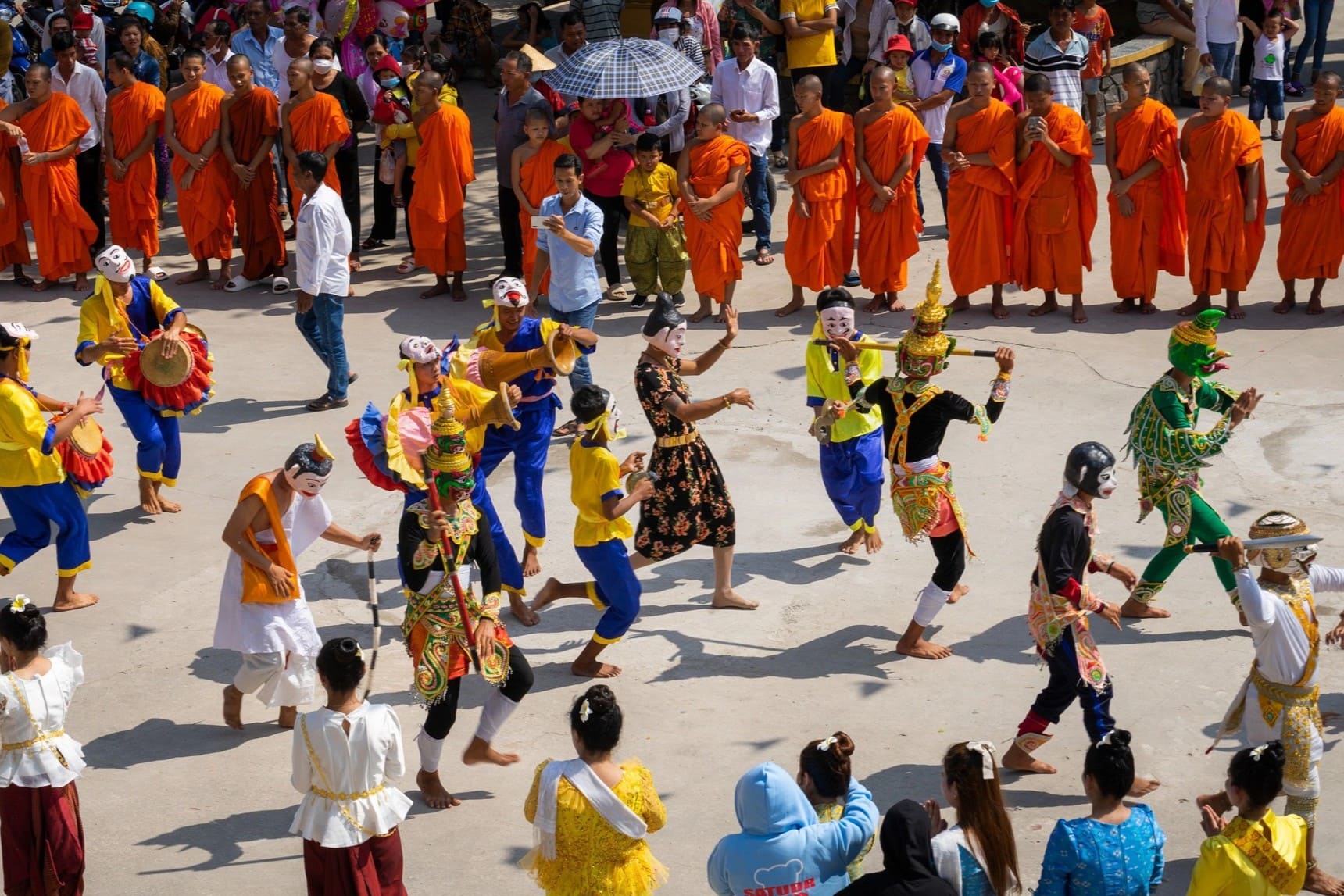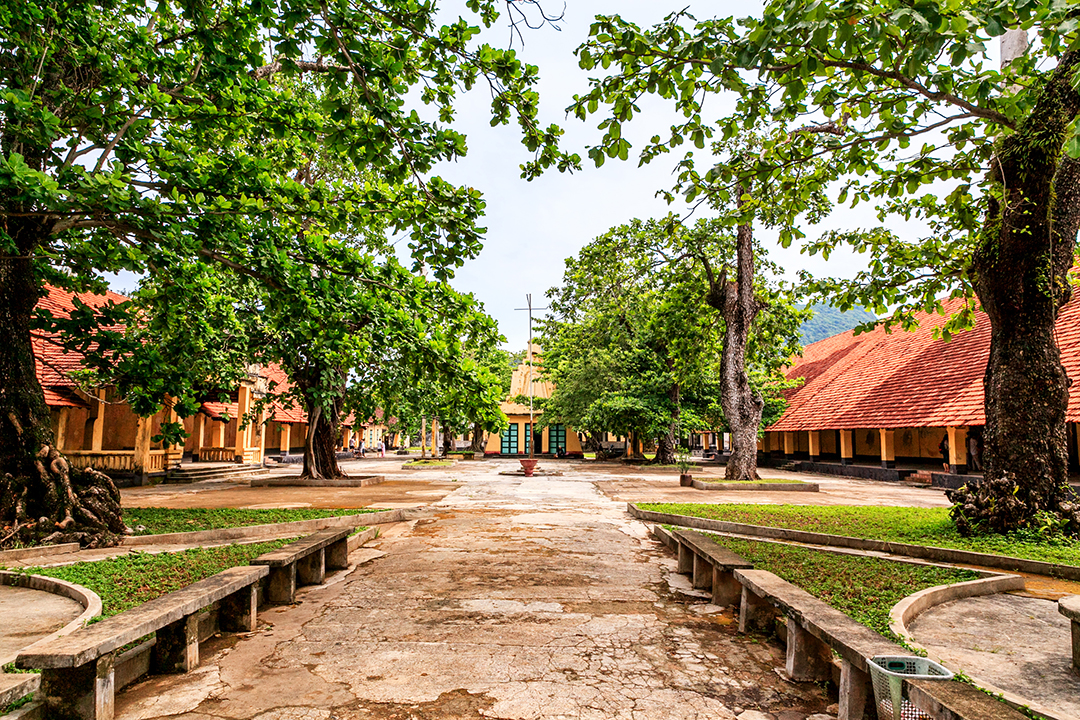Con Dao Prison: History, Structure, Things To Do & Travel Guide
Con Dao Prison, one of Vietnam’s most infamous historical sites, stands as a testament to resilience and struggle. Built by French colonialists in 1862 and later used by American forces, this site became a notorious prison during the Vietnam War. Con Dao Prison's history honors Vietnamese revolutionaries, its preserved structures offering a haunting yet meaningful experience.
The Con Dao Prison Complex includes Phu Hai, Phu Tuong, Phu Binh, and the infamous Tiger Cages, where prisoners face extreme conditions. Each prison block tells a different chapter of this dark history, making it a place of both sorrow and reflection. Exploring these sites provides a deeper understanding of the prison’s brutal past and the resilience of those who were confined within its walls.
A visit to Con Dao Prison is about its architecture and history, it is also an immersive experience. Step inside the Tiger Cages, witness harsh prison conditions and explore the Con Dao Museum's artefacts and personal accounts. You can learn about famous political prisoners and hear survivors' stories of courage against oppression.
For those interested in a comprehensive experience, there are several nearby attractions to visit after Con Dao Prison. The solemn Hang Duong Cemetery serves as a resting place for many Vietnamese revolutionaries, offering a space for remembrance and tribute. Meanwhile, the Con Dao National Park allows one to explore the island’s natural beauty, contrasting the prison’s dark past with lush greenery and rich biodiversity.
This article will also answer some of the most frequently asked questions, such as: Are the Tiger Cages still intact? What should visitors wear when exploring the site? If you are a history enthusiast or a traveler looking for a deeper connection to Vietnam’s past, this guide will provide everything you need to know for an insightful visit.
Overview of Con Dao Prison
Con Dao Prison was built in 1862, by the French colonialists to imprison patriotic revolutionaries who resisted colonial rule. Later, during wartime, the American imperialists continued to use this facility to suppress and detain revolutionaries. Historically, the French colonial administration and the American imperialists built 127 prison cells, 42 solitary confinement cells, and 504 isolated "Tiger Cages" in the Con Dao area.
Among them, the Tiger Cages a system of isolated cells were used to imprison key political prisoners, especially those deemed “dangerous”. Detainees here endured extremely harsh conditions and brutal forms of torture. Under colonial and imperialist rule, Con Dao Prison became a symbol of severe oppression, yet it also fostered the unyielding spirit of Vietnamese patriots.
Con Dao Prison was notorious for its inhumane conditions and brutal torture methods. The prison system comprised multiple sections, each serving a different function in the repression of prisoners. Some of these special detention areas have become symbols of the cruelty inflicted by colonial and imperialist regimes.
Many resilient revolutionaries were once imprisoned here, including Nguyen An Ninh, Le Hong Phong, and Vo Thi Sau. Vo Thi Sau, a courageous female revolutionary who bravely faced execution, is now honored as a national hero. Her grave and thousands of others rest at Hang Duong Cemetery, where visitors honor their sacrifices.
After Southern Vietnam's liberation in 1975, Con Dao Prison closed, ending its painful yet proud history. Today, the Con Dao Prison Historic Site, a special national heritage, preserves Vietnam’s struggle for independence. The Con Dao Museum preserves documents, artefacts, and firsthand accounts, vividly depicting prisoners' harrowing experiences.
Now a national heritage site, Con Dao Prison stands as a powerful testament to the sacrifices of past generations in the fight for freedom and independence. Its preserved structures and exhibits serve as a stark reminder of the resilience and courage of those who endured its hardships.
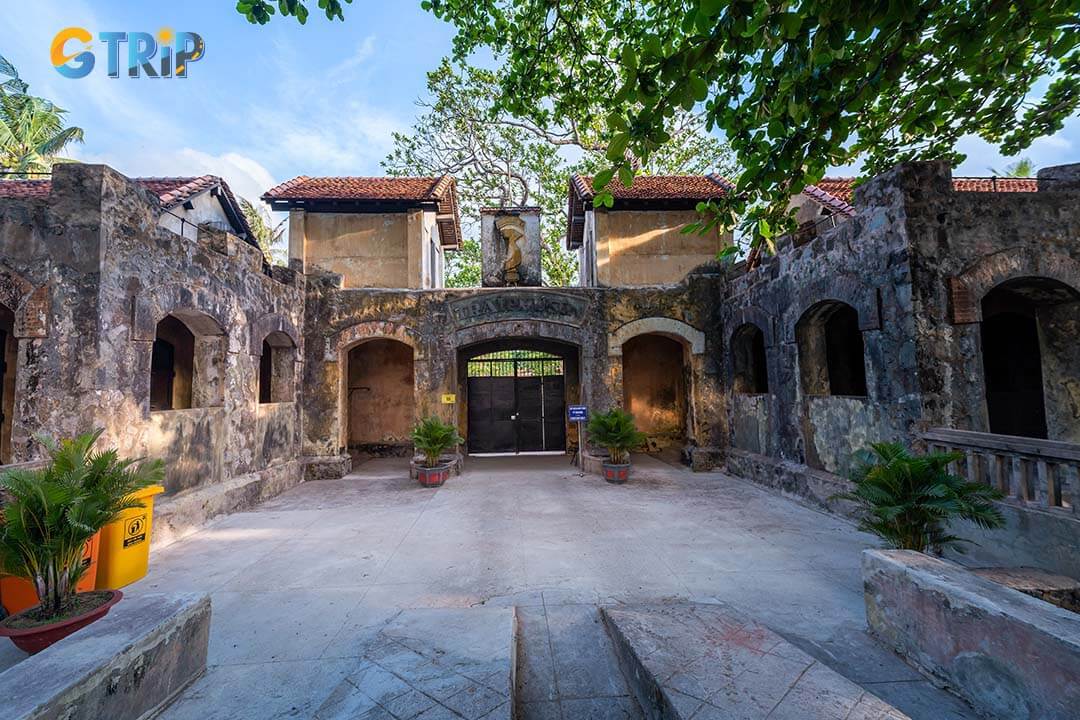
Con Dao Prison, once a site of brutal oppression, now stands as a powerful symbol of resilience and Vietnam’s fight for independence
History of Con Dao Prison
In 1861, the French colonists occupied Con Dao. On February 1, 1862, Governor Bonard of Cochinchina signed a decision to establish Con Dao Prison. The French chose Con Dao for its isolation, lack of transport, and inescapable terrain.
Less than 6 months after its completion, the first 50 prisoners were exiled here in March 1862. However, that number quickly grew. By July 1867, just 5 years later, Con Dao Prison held over 600 prisoners. In the first 50 years, the number of prisoners detained here fluctuated around 1,000.
Under French rule, especially after the Southern Uprising of 1940, the prison cells and camps were overcrowded with revolutionaries. Within just 2 years (1941-1942), an estimated 20 prisoners died daily due to brutal torture.
After the success of the August Revolution in 1945, the revolutionary government briefly took control of Con Dao. However, soon after, the French returned as part of their reoccupation of southern Vietnam, reclaiming Con Dao and continuing to imprison revolutionaries. The first ship carrying prisoners back to the island transported over 300 people, 56 of whom were executed on the afternoon of May 27, 1946.
When the French withdrew in 1955, the South Vietnamese government, backed by the US, took over the prison, expanded the detention system, and intensified torture methods. At its peak, from 1970 to 1972, Con Dao Prison held nearly 10,000 prisoners.
On May 1, 1975, political prisoners rose and liberated Con Dao, marking the end of a painful yet heroic era. The prison was officially shut down and later restored as a historical site open to visitors.
The structure of the Con Dao Prison Complex
The Con Dao Prison Complex is a poignant testament to the suffering endured by thousands of Vietnamese revolutionaries and prisoners. Spread across multiple facilities, each with its form of punishment, the prison system became one of the most notorious in Vietnamese history.
Today, visitors to Con Dao Prison can explore its dark past through well-preserved sites like Phu Hai, Phu Tho, Phu Son, and Phu Tuong Prisons. They can also witness the infamous Tiger Cages and Cow Shed.
Phu Hai Prison - The largest and oldest prison
Phu Hai Prison, established in 1862, is the largest and oldest prison in the Con Dao Prison Complex. Initially named Bagne I, the prison was later renamed Lao I, Republic Camp, Camp 2, and finally, in November 1974, Phu Hai Prison. Covering an area of 12,863 square meters, it housed 10 communal cells, 1 special detention cell, 20 stone pits, a forced labor area for breaking rocks, and a grain-grinding dungeon.
If Con Dao Prison was considered a "Hell on Earth" then the grain-grinding dungeon was the "Hell within Hell". Built by the French as a form of forced labor, prisoners endured 12-hour shifts in a cramped, dust-filled space, grinding grain while shackled by a 5 kg weight. Under Republic of South Vietnam regime, the dungeon was disguised as an infirmary but functioned as a morgue where prisoners were left to die. The prison also included a courtyard, well, restrooms, kitchen, chapel, and infirmary. However, prisoners were never allowed to use these facilities, as they were built only to mislead international human rights observers and public opinion.
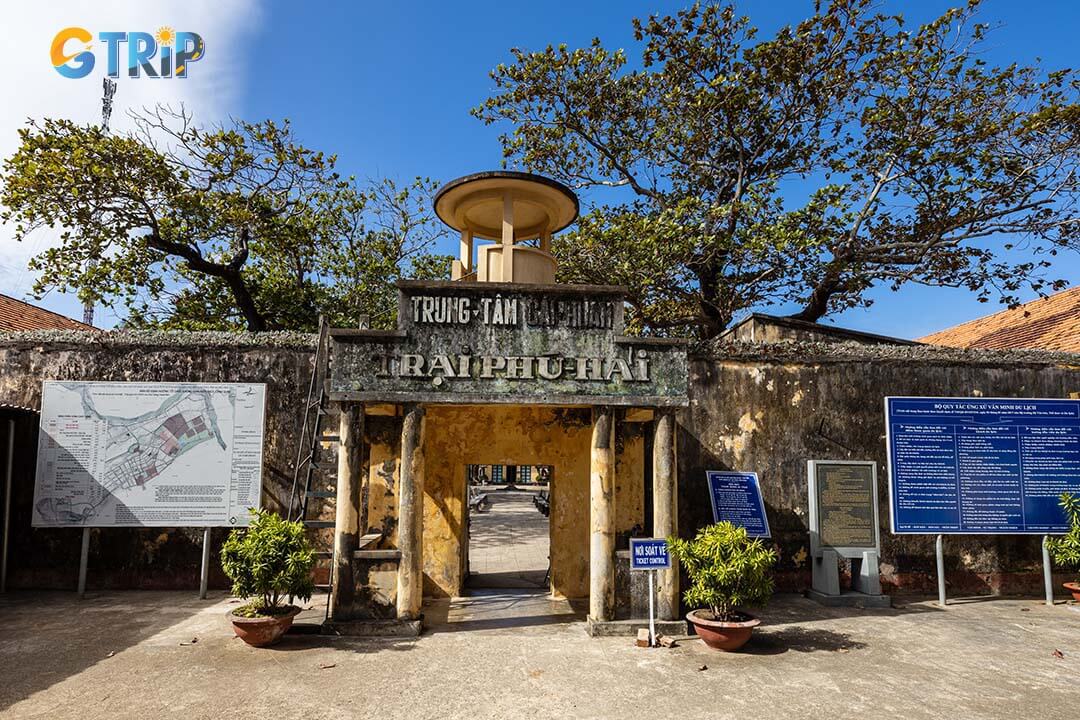
Phu Hai Prison, the oldest in the Con Dao complex, symbolizes both the brutal oppression of revolutionaries and their unbreakable resilience
Phu Tho Prison
In 1928, the French colonial authorities expanded the prison system by constructing Banh III, now known as Phu Tho Camp, covering a total area of 13,603m². The camp initially consisted of three detention blocks 2 for collective confinement and one for solitary imprisonment along with a kitchen and an infirmary. After the August Revolution of 1945, the facility was renovated, reducing the number of detention blocks to two, each containing four cells.
The French isolated new prisoners in Phu Tho Camp to prevent them from spreading mainland news before transfer. It later held political prisoners deemed "dangerous" or "incorrigible", including those convicted of sabotage, conspiracy, and escape attempts. During the U.S.-backed regime, the camp also held female political prisoners. Cell No. 10 was converted into solitary confinement with 15 tiny disciplinary cells, grimly called the "Chicken Coop" due to its harsh conditions.
Phu Son Prison
Phu Son Prison, also known as Banh 2, was built by the French colonialists in 1916 and was a large facility for its time. The camp covering a total area of 15.212 m² had 13 large cells, 14 solitary confinement cells, and a passageway for guards to inspect prisoners. However, the passageway was later abandoned after a prison guard was killed by a prisoner there.
Phu Son Prison was designed to hold high-ranking political prisoners, making it one of the most heavily guarded facilities in the Con Dao Prison Complex. The prison had reinforced walls, locked cells, and constant surveillance, ensuring that escape was virtually impossible. Those held here included resistance leaders, intellectuals, and strategists against the French and later American-backed forces. This place used to detain former patriotic political prisoners such as Le Hong Phong, Hoang Quoc Viet, Pham Van Dong, Nguyen Van Cu, etc.
The prison guards used extreme psychological tactics to break the prisoners' spirit, including isolated detention, lack of food and constant surveillance. Political prisoners were brought here to cause disunity and disorientation of the soldiers. However, with their steadfast will, constantly fought to improve their lives and improve the political prisoner regime. Along with the influence of the Communist Party of Vietnam, nurturing the revolutionary will of many people, they eventually joined the same side and became patriotic communists. Since then, Phu Son Prison Camp has been known as the "Communist Nursery".

Phu Son Prison once held Vietnam’s revolutionary leaders, who turned oppression into a place of ideological resilience
Phu Tuong Prison - A hidden area sheltering the Tiger Cages
Built in 1940, Phu Tuong Prison was part of the Phu Hai Correctional Center and is located on Ton Duc Thang Street. Built alongside Phu Tuong Camp and Camp 5, this prison formed a cluster that concealed the French "Tiger Cages" isolation area. Covering 5,475 m², it included eight cells arranged in two rows, along with facilities such as a kitchen, storage room, infirmary, and courtyard.
During the French colonial period, the camp housed prisoners with infectious diseases before being repurposed to detain Viet Minh captives. Under the U.S.-backed regime, it held and tortured anti-separatist detainees, with a hidden passage linking it to the French Tiger Cages.
The Tiger Cages
Con Dao's Tiger Cages, built by the French in 1940, were later used by the U.S.-backed South Vietnamese regime during the Vietnam War. Covering an area of 5,475 m², the complex housed 120 solitary confinement cells arranged in 2 sections, each containing 60 cells. These tiny, windowless cells (1.5m x 3m) had solid iron bars above and a central walkway for guards to monitor and torment inmates.
Prisoners were shackled at all times, forced to eat, sleep, and relieve themselves in their cells while enduring torture and starvation. Those who resisted were beaten from above with sticks, and guards would pour water and lime powder through ceiling openings as punishment.
The "Sunbathing Room", an open-roofed area with 60 cells, was used for additional torment, exposing inmates to extreme weather and brutal beatings. Hidden deep within Phu Tuong Camp, the Tiger Cages were accessible only through a concealed, locked door. Their existence remained a secret until 1970 when their exposure shocked the world.
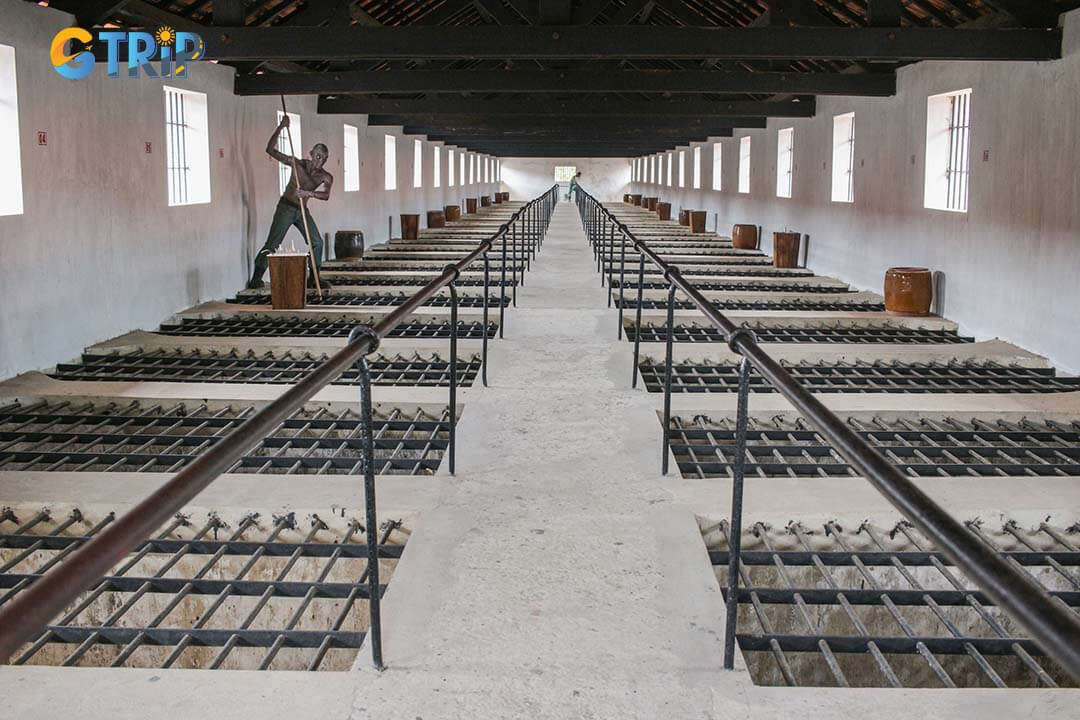
Tiger Cages, notorious for their brutal conditions, were secret prison cells used to torture and isolate political prisoners during the Vietnam War
Phu Phong Prison - Harsh labor and forced compliance
Phu Phong Prison was built by the US - puppet regime in 1962 to expand the Con Dao prison system and detain political, military and female political prisoners. The prison was originally called Camp 5 before being renamed Phu Phong Camp. It consisted of 12 prison cells arranged in three rows, each with four rooms, along with a kitchen, covering a total area of 6,752m². The fibro cement-roofed structure was positioned in front of the French Tiger Cages to conceal them. Phu Phong Camp saw brutal crackdowns yet remained a symbol of inmate resilience, especially among female prisoners.
Phu An Prison
Built in 1968, covering 42,140m², the camp had 20 cells and 8 solitary confinement rooms, divided into Zones A and B (each with 10 cells and 4 isolation rooms). Unlike French-built prisons, auxiliary facilities like the kitchen, infirmary, and food storage were placed at the entrance, while the cells were hidden deeper inside.
Phu Binh Prison - American tiger cages
Built during the Vietnam War, Phu Binh Prison was one of the last major additions to the Con Dao Prison Complex. It was mainly used by the South Vietnamese government and the US military to detain political prisoners.
The prison was built and completed in 1971 with a total area of 29,618 m2 and was renamed Phu Binh camp after the Paris Agreement. It consists of 8 areas: A-B, C-D, E-F, and G-H, and each area has 48 isolated rooms. Each zone had two rows, each containing 48 cells, along with storage rooms, a kitchen, a warden’s office, and an infirmary. The entire camp was surrounded by barbed wire fences and concrete walls.
This was a special type of concrete prison cell without sleeping platforms, forcing inmates to lie on the damp cement floor. Each cell had iron bars on top, similar to the French Tiger Cages, but without an overhead walkway. Instead, a low tin roof trapped the heat, making the cells unbearably hot during the day, while at night, prisoners endured rising humidity and cold air from the ground.
Each solitary confinement room here is only about 5 m2, with a wooden bucket for prisoners to urinate. But there were times when each room held 8-10 people and the toilet was not emptied for several weeks, so the prisoners' bodies were covered in faeces and urine.
The guards used psychological warfare, making loud noises like opening the iron door to check and then slamming it shut, 48 cells in a row and 8 rows in a row with 384 times hitting the prisoners' heads and chests, which was very uncomfortable. However, this was also the place where the liberation of Con Dao began.
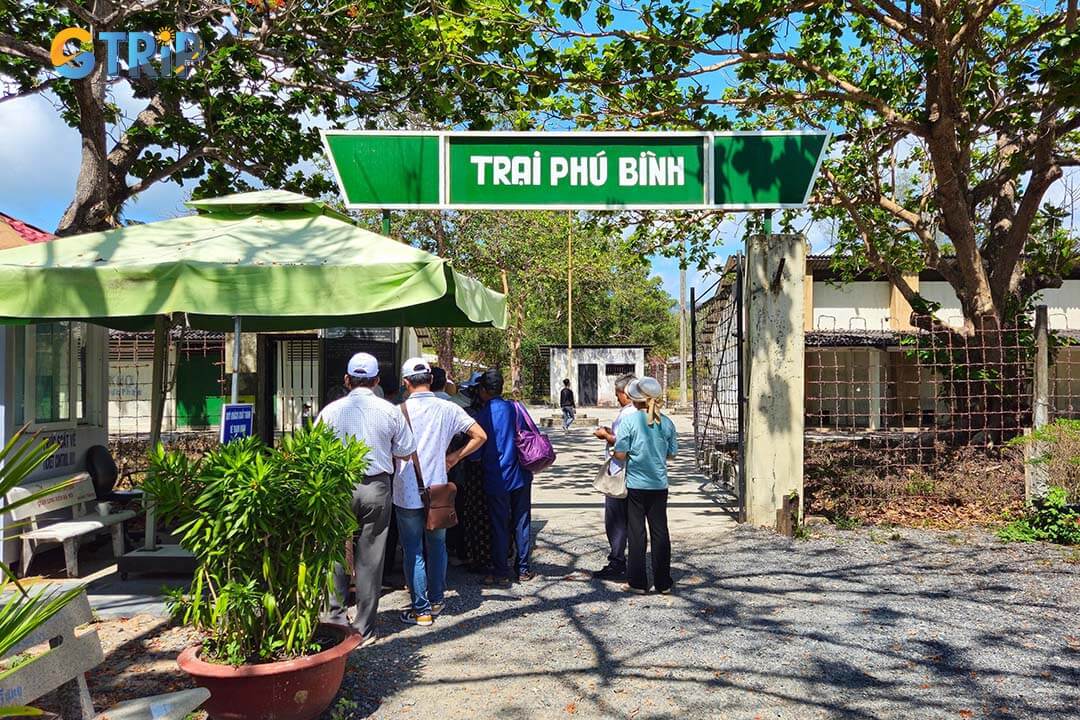
Phu Binh Prison, infamous for its inhumane conditions, was also the starting point of Con Dao’s liberation
Phu Hung Prison
Phu Hung Prison was built by the U.S.-backed puppet regime in late 1968 and completed in 1972. Covering 26,200 m², the prison consisted of 20 rooms, each 115 m², divided into two facing sections with 10 rooms and 4 cells per section. However, only 10 rooms were fully completed; the remaining 10 rooms and 8 cells were left unfinished when the Paris Agreement was signed, leading to their abandonment.
Cowshed (Solitary Cowshed Zone)
Established in 1876 to raise cattle for feeding prison authorities, the site was converted into a detention camp for female prisoners in 1930, with nine additional cells built by the French. The former cattle dung pit was also used as a torture method, where prisoners were submerged as a form of inhumane punishment.
Additionally, the U.S.-backed government planned to build Camp 9, but construction was abandoned after the Paris Peace Accords were signed. Only the concrete foundation and columns remained unfinished. Today, these remnants serve as a stark reminder of the island’s dark history.
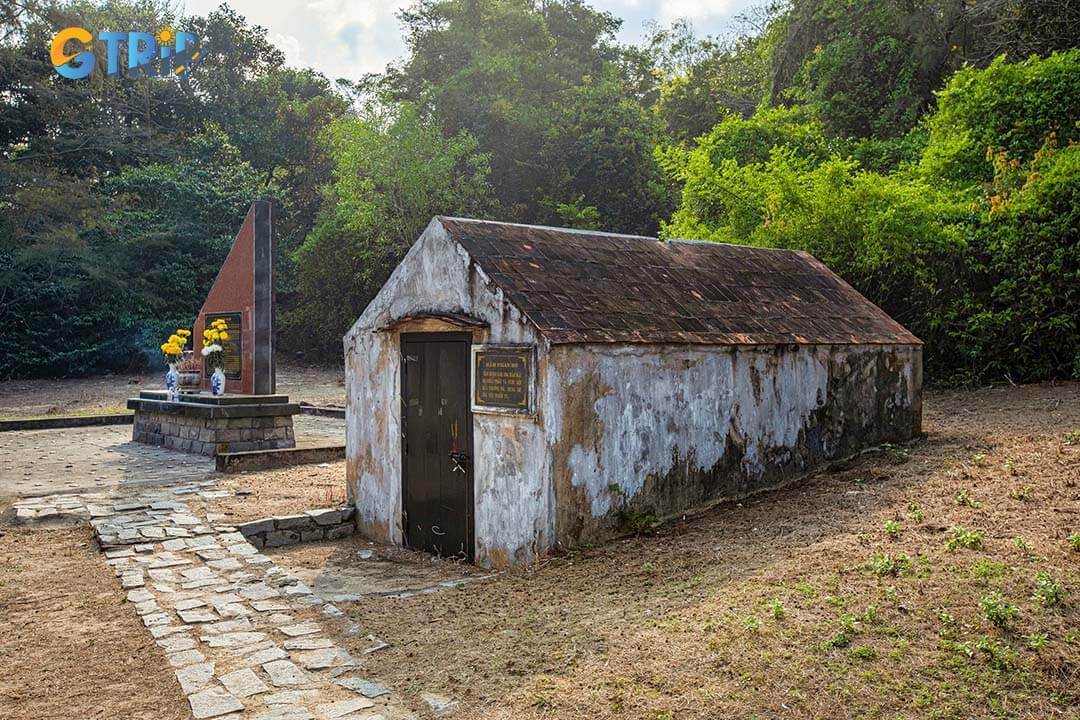
The Cowshed remains a haunting symbol of the extreme cruelty and resilience within Con Dao Prison
The Con Dao Prison Complex is a symbol of sacrifice and resistance, attracting tourists who want to learn about its dark history. Those who visit this historical site can explore various activities while visiting Con Dao Prison, thereby gaining a deeper understanding of the past and heritage of this place.
Con Dao Governor’s Palace
The Governor’s Mansion was established between 1862 and 1876 along with other island infrastructure. Covering an area of 20,810m², it includes the main building, auxiliary houses, and gardens. Over 113 years (186 - 1975), 53 island governors resided and worked here 39 during the 92 years of French colonial rule and 14 during the 21 years of U.S.-backed administration.
Prisoners referred to the governor as “Chua Dao”, this word had the same meaning as “Island Lord”. It served as the command center for oppressive policies and large-scale crackdowns on prisoners.
Other relics of Con Dao Prison
Prison Labor Camps: According to historical records, by 1930, at least 18 prison labor camps were in operation. These camps served 2 purposes: supporting the administrative and logistical needs of the colonial government and enforcing forced labor as a means of prisoner "re-education".
Cong Quan House: One of the few remaining French colonial structures on Con Dao, this building once welcomed officials and visitors to the island during the colonial era.
Ma Thien Lanh Bridge: An unfinished bridge built by the French in the middle of a rugged, remote jungle. It stands as a solemn reminder of the suffering endured by prisoners forced to work under harsh conditions.
Pier 914: Constructed in 1873, this T-shaped pier is 130 meters long and 4.8 meters wide, featuring two main sections and a smaller auxiliary wing. Its name, "914", commemorates the estimated number of prisoners who perished during its construction.
4 things to do when visiting Con Dao Prison
Now a national heritage site, it preserves the stories of resilience and sacrifice through haunting remnants like the infamous Tiger Cages and firsthand accounts of former prisoners.
1. Explore the Tiger Cages of Con Dao Prison
As you walk through the Tiger Cages, you will witness the shackles, rusted chains, and remnants of brutal punishments that countless Vietnamese revolutionaries endured. The site stands as a powerful reminder of the resilience of those who fought for their country’s independence. Accounts from former inmates, and some later key political figures, deepen visitors' sorrow and respect. While these cells are no longer in use, their historical and symbolic significance remains deeply ingrained in Vietnam’s collective memory.
2. Visit the Con Dao Museum
A visit to Con Dao Prison is incomplete without exploring the Con Dao Museum. This well-preserved historical site provides a comprehensive look into the dark past of the prison system and its impact on Vietnam’s struggle for freedom. Through photographs, documents, artifacts, and personal belongings of prisoners, the museum vividly narrates the horrors of captivity and torture faced by Vietnamese revolutionaries.
One of the most striking exhibits is the recreation of prison cells and torture devices, giving visitors an almost first-hand glimpse into the suffering endured by inmates. Alongside these harrowing displays, the museum also honors the heroic sacrifices of prisoners who played a significant role in Vietnam’s independence. By walking through the museum’s halls, you gain a deeper appreciation of the resilience and unwavering spirit of those who once called Con Dao Prison their battleground.
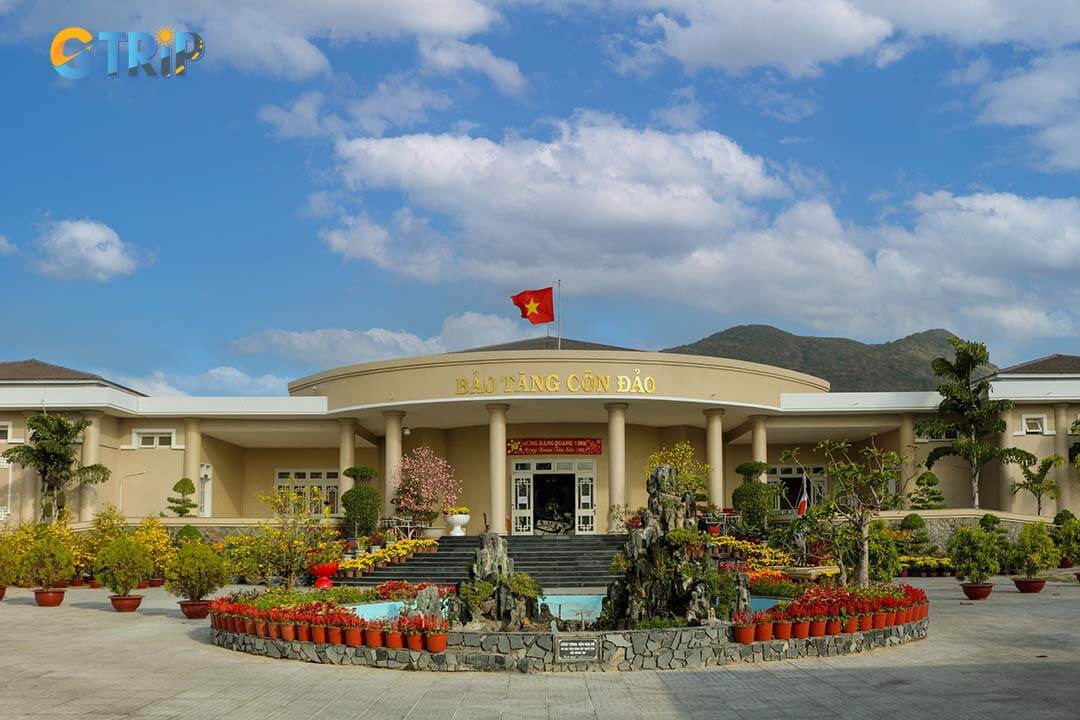
The Con Dao Museum preserves the harrowing history of the prison, honoring the resilience and sacrifices of Vietnamese revolutionaries
3. Learn about famous political prisoners in Vietnam
Con Dao Prison was home to many renowned political prisoners who later became key figures in Vietnam’s history. Among them were Pham Van Dong, who later became Prime Minister of Vietnam, and Le Duan, the General Secretary of the Communist Party. These individuals, along with countless other revolutionaries, endured years of torture, forced labor, and solitary confinement in their fight for independence.
One particularly moving story is that of Vo Thi Sau, a young female revolutionary who was arrested and executed at the age of 19. Her bravery and refusal to betray her comrades turned her into a symbol of resistance for the Vietnamese people. You can learn about her final moments and pay respects at Hang Duong Cemetery, where she and many other revolutionaries were laid to rest. These stories of resilience and sacrifice bring a human element to the historical site, making the experience of visiting Con Dao Prison even more profound.
4. Listen to stories of Con Dao Prison survivors
For those seeking a deeper emotional connection to the history of Con Dao Prison, listening to the testimonies of former prisoners is an unforgettable experience. Some survivors have shared their stories through books, documentaries, and guided tours. These firsthand accounts reveal the brutal treatment, forced labor, and unbreakable spirit that defined life inside these walls.
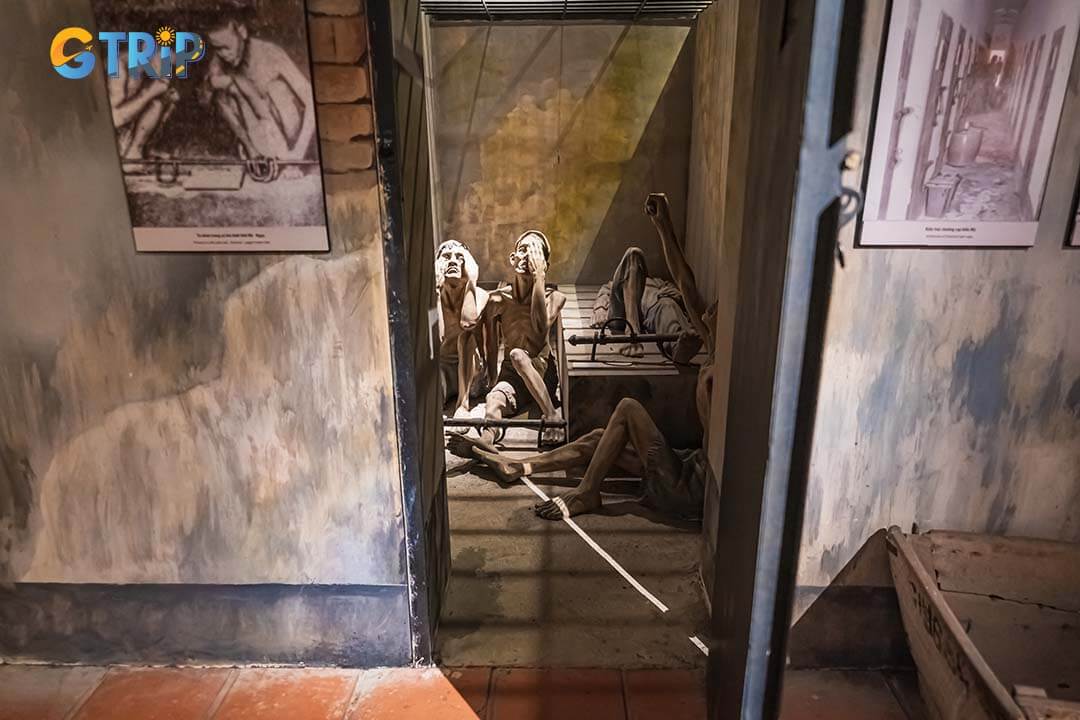
Hearing former prisoners' testimonies offers a powerful, firsthand insight into the suffering and resilience within Con Dao Prison
These stories expose the toll of imprisonment while highlighting the resilience and unity of those who endured. You who take the time to hear these narratives often leave with a newfound appreciation for Vietnam’s revolutionary history.
When is the best time to visit Con Dao Prison?
The best time to visit Con Dao Prison is from November to April, when the weather is dry and pleasant, making it ideal for exploring this historical site. During these months, temperatures range between 22°C and 30°C, with minimal rainfall and calm seas, ensuring comfortable travel conditions. The Con Dao weather is at its most stable, allowing visitors to fully experience the prison complex without interruptions from heavy rain or strong winds.
From May to October, Con Dao enters the rainy season, characterized by frequent tropical storms and high humidity. While the island’s landscapes become lush and vibrant, sudden downpours can disrupt outdoor activities, and rough seas may affect ferry schedules. However, this period sees fewer tourists, making it an option for those who prefer a quieter visit.
For those looking to combine their visit with nature exploration, the dry season is also the best time to discover nearby attractions. The pristine beaches of Con Dao, such as Dam Trau Beach and Dat Doc Beach, offer crystal-clear waters and golden sands.
How to get to Con Dao prison?
Travelling to Con Dao Prison requires careful planning due to its remote island location. You can reach Con Dao by flights from Ho Chi Minh City or ferries from Vung Tau, each offering distinct experiences depending on budget, time, and preference.
1. By air
The most efficient way to get to Con Dao Prison is by flying. Currently, Co Ong Airport (Con Dao Airport) operates direct flights from Ho Chi Minh City (SGN) and Can Tho (VCA) via Bamboo Airways and Vietnam Airlines. The flight duration from Ho Chi Minh City is approximately 50 minutes, making it the quickest and most comfortable option. Upon arrival at Co Ong Airport, visitors can take a taxi or motorbike rental to reach Con Dao Prison, which is around 14 km from the airport.
2. By ferry
For those seeking a more adventurous and cost-effective experience, ferries from Vung Tau provide an alternative way to travel to Con Dao Prison. Ferries depart from Cat Lo Port (Vung Tau) to Ben Dam Port (Con Dao) and take approximately 3.5 to 4 hours depending on weather conditions.
- Fast ferry: The Superdong and Con Dao Express 36 are high-speed ferries that ensure a more stable and comfortable ride.
- Overnight ferry: The Thanh Hai and Con Dao 9 - 10 ferries are slower but cheaper, taking around 12 hours with basic sleeping arrangements.
Once at Ben Dam Port, visitors can take a taxi or motorbike to reach Con Dao Prison, about 15 km away. The scenic drive offers a glimpse of Con Dao’s rugged coastline and lush landscapes, adding to the experience before arriving at the historic site.

Ferries from Vung Tau offer a budget-friendly route to Con Dao Prison, with both high-speed and overnight options available
Ticket price and visiting hours of Con Dao Prison
When planning a visit to Con Dao Prison, it's essential to know the ticket prices and visiting hours to ensure a smooth and well-organized trip. As one of Vietnam’s most significant historical landmarks, the prison offers you an in-depth look into the struggles and resilience of Vietnamese revolutionaries.
Ticket price and opening hours
As of 2025, the entrance fee for Con Dao Prison is 40,000 VND per person (updated in March 2025). This ticket grants access to key historical sites, including the Governor’s Palace, Phu Hai Prison, French Tiger Cages, and American Tiger Cages. The site is open daily, including weekends and public holidays, from 7:30 AM to 11:30 AM and 2:00 PM to 5:00 PM.
For a more immersive experience, visitors are encouraged to join guided tours, which provide in-depth insights into the prison’s history and the resilience of its inmates. Tickets can be purchased at the Con Dao Museum or through the official website of the Con Dao National Relic Preservation Center.
Nearby attractions to visit after Con Dao Prison
Exploring Con Dao Prison is a deeply moving experience, but the journey through Con Dao Island tourist attractions doesn’t end there. After learning about the island’s historical significance, visitors can explore its spiritual, natural, and cultural sites. After you visit the prison, explore sacred cemeteries dedicated to revolutionaries and stunning nature reserves here are the top places to see next.
Hang Duong Cemetery
Hang Duong Cemetery, one of the island’s most solemn sites holds the graves of thousands of revolutionaries who perished at Con Dao Prison. Among them is Vo Thi Sau, a national heroine who became a symbol of resistance. The cemetery is especially busy at night when locals and visitors gather to light incense and pay their respects. The atmosphere is deeply emotional, as stories of bravery and sacrifice linger in the air. If you visit in the early evening, you’ll witness an overwhelming sense of reverence as people leave offerings at the graves of fallen soldiers.
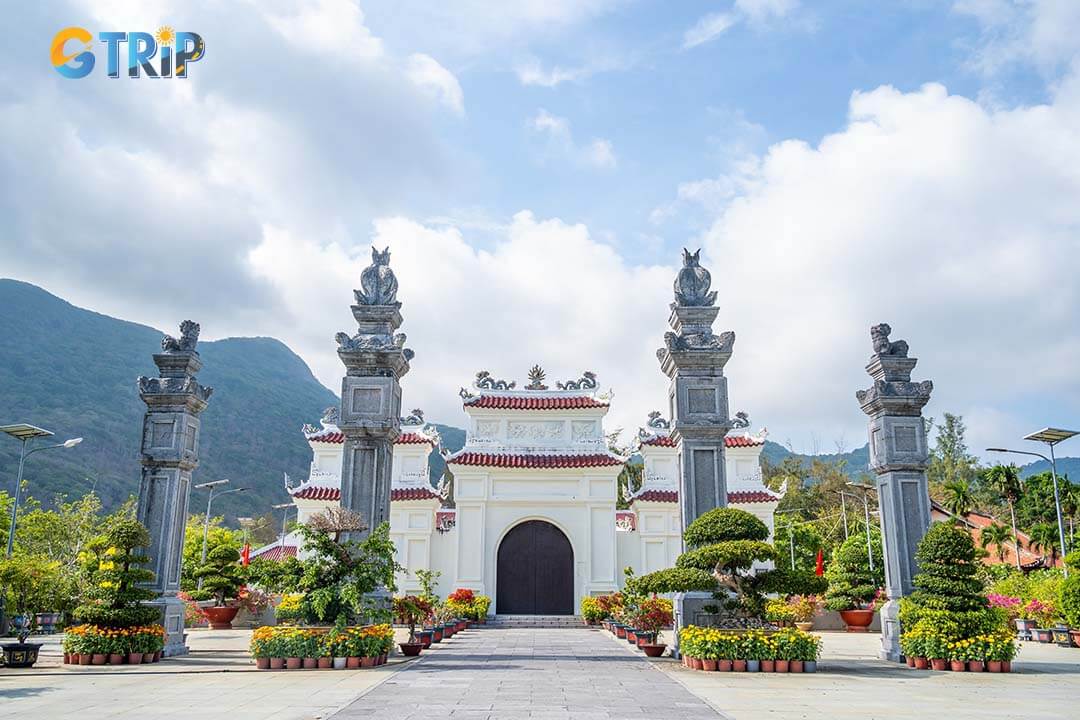
Hang Duong Cemetery is a sacred site where visitors honor fallen revolutionaries, especially Vo Thi Sau, in solemn nighttime ceremonies
Con Dao National Park
After immersing yourself in Con Dao’s turbulent past, a visit to Con Dao National Park offers a refreshing contrast. Covering over 15,000 hectares of land and sea, this protected area is home to diverse wildlife, including rare sea turtles, long-tailed macaques, and the critically endangered dugong. The park is an excellent destination for trekking, with trails leading to scenic viewpoints and hidden beaches. A popular route takes you to Dam Tre Bay, where lush forests meet turquoise waters, providing an opportunity to see vibrant coral reefs. If you prefer hiking, birdwatching, or snorkeling, the national park is a must-visit for nature lovers.
An Hai Lake
An Hai Lake, near Con Dao Town, offers a serene retreat with tranquil waters and lush surroundings perfect for reflection after visiting Con Dao Prison. The lake is particularly stunning at sunrise and sunset when the water reflects the changing colors of the sky. It’s also a great place to observe local fishermen casting their nets or simply enjoy a walk along the shore. An Hai Lake's tranquillity contrasts with the prison's harsh past, offering a peaceful space for reflection.
Van Son Pagoda
Perched on Chua Mountain, Van Son Pagoda is the island’s most significant Buddhist site. Visitors must climb a winding path lined with lush greenery to reach the temple, but the effort is well worth it. The pagoda offers panoramic views of Con Dao Town, the coastline, and the vast ocean beyond. It’s a place of spiritual significance where locals come to pray for good fortune and pay homage to Buddhist deities. Bay Canh Island, visible from the temple grounds, boasts pristine beaches and a renowned sea turtle conservation program. The combination of breathtaking scenery and cultural heritage makes Van Son Pagoda a perfect final stop on your journey through Con Dao travel guide attractions.
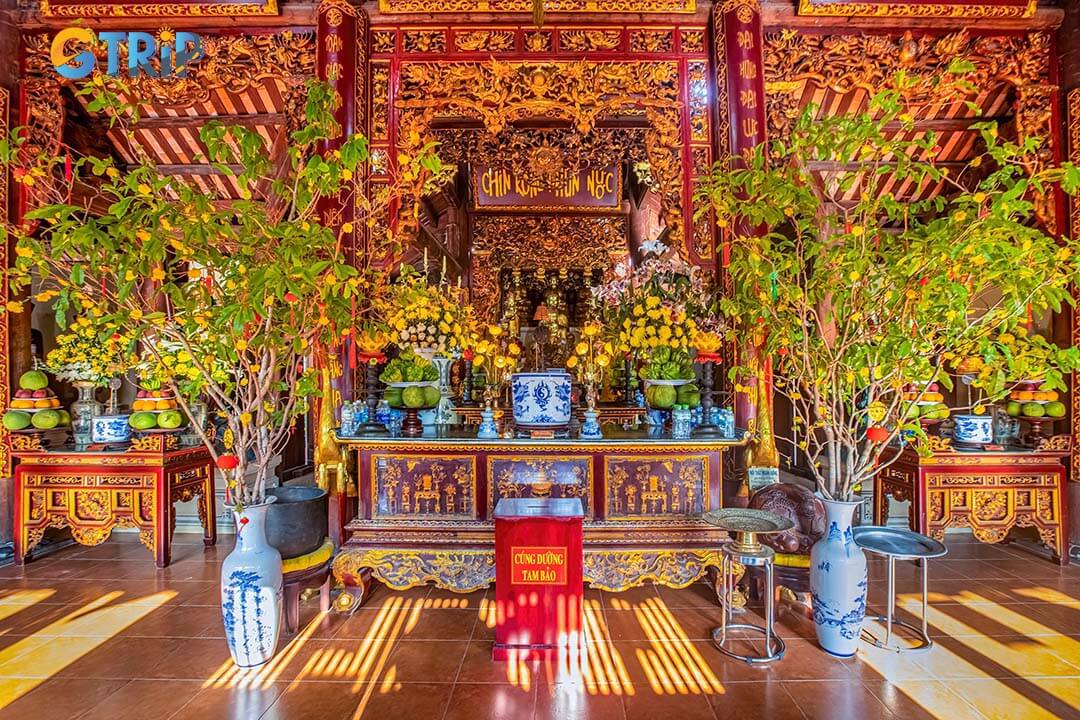
Van Son Pagoda offers stunning ocean views and a serene space for prayer and reflection
FAQs about Con Dao Prison
Visiting Con Dao Prison raises many questions about its history, atmosphere, and practical details. Here are some of the most frequently asked questions to help you prepare for your visit.
1. Are the Tiger Cages still intact?
Yes, the infamous Tiger Cages of Con Dao Prison are still preserved as part of the historical site. These small, cramped cells were designed to hold prisoners in inhumane conditions, with iron bars on top that allowed guards to observe and punish inmates easily. The cages played a crucial role in exposing the brutal treatment of Vietnamese political prisoners, especially when they were revealed to the world in 1970 by American journalists. Today, you can explore these grim remnants of the past and gain insight into the harsh realities of Vietnam War prison camps. The site is one of Con Dao’s most haunting landmarks, akin to Hoa Lo Prison in Hanoi, which also bore witness to immense suffering.
2. What should I wear when visiting?
When visiting Con Dao Prison, it is advisable to wear modest clothing out of respect for the historical significance of the site. Since the prison serves as both a museum and a memorial, covering shoulders and knees is recommended, similar to visiting Van Son Pagoda, another spiritually significant landmark on Con Dao Island. Comfortable shoes are also essential, as exploring the prison requires a fair amount of walking. Given the humid climate, lightweight and breathable fabrics are ideal, especially for those planning to visit other Con Dao Island attractions, such as Dam Tre Bay, after touring the prison.
3. How long does a typical visit to Con Dao Prison take?
A visit to Con Dao Prison typically takes 1.5 to 2 hours, depending on how much time you spend exploring each section. Guided tours, available in both Vietnamese and English, provide detailed historical context and usually last about 90 minutes. Many visitors also choose to extend their trip to include nearby sites such as Van Son Pagoda, which offers a peaceful retreat after an emotionally heavy experience at the prison.
Con Dao Prison stands as a powerful reminder of Vietnam’s history, reflecting the resilience and sacrifices of those who fought for independence. Exploring the Tiger Cages, visiting the Con Dao Prison Museum, and learning about political prisoners provide a deeper understanding of the country’s past. The surrounding sites, including Hang Duong Cemetery and Van Son Pagoda, add layers to the experience, balancing historical reflection with natural beauty.
For those planning a visit, considering the best time to explore and understanding ticket prices can enhance the trip. The journey to Con Dao Island itself is an experience, if you choose by flight or ferry, offering a glimpse into Vietnam’s stunning coastal landscapes.
If you’re interested in discovering more of Southern Vietnam’s historical and scenic destinations, explore Ba Ria - Vung Tau with GTrip - Vietnam Travel Agency. This region offers a blend of coastal attractions, cultural sites, and authentic experiences, making it a worthwhile addition to your itinerary.

